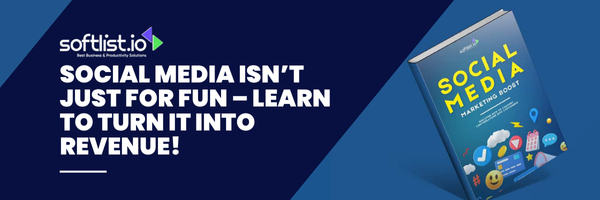In the digital age, accessing data from social platforms like Instagram is crucial for businesses, developers, and marketers. By leveraging the Instagram API, you can tap into a wealth of data to drive insights, analyze user engagement, and optimize content strategies. This guide will walk you through the essential steps to effectively use the Instagram API for data access, including setting up your environment, handling authentication, making API calls, and integrating the data into your systems.
Activating Access to Data Through Instagram API
Accessing the data through the Instagram API is a great opportunity for businesses, developers, and marketers. Whether it is voice-of-the-customer analysis, social media dashboards, or content automation — it is important to set up Instagram API integration correctly. In this guide, you’ll learn everything from registering your application all the way to analyzing the data you retrieve, so your API integration is both efficient and seamless.
Registering Your Application
To use the Instagram API, the first step is to register your application in the Meta for Developers platform. This means creating a new app, defining what it will do, and generating two essential credentials: App ID and App Secret. These credentials are necessary to authorize your API requests to access Instagram’s resources.
Register, with the clear definition of functionality, your app provides. Meta reviews apps to ensure they comply with its policies, particularly around data use. The need for clarity on this step is so great: misrepresentation can lead to delayed approval or entire denial. To avoid these issues:
- Please give a specific summary of what your app does.
- Do not map the user data use cases without a clear explanation for each case.
- Comply with your privacy policies (GDPR, CCPA, etc.).
Furthermore, giving examples or even a demo of the workings of your app during registration further improves the potential for approval. So, for example – say your app is about content analysis, then add screenshots or videos showing what it has to offer.
Sandbox Mode for Testing
Your app will automatically run in a sandbox mode once you have registered. In this mode:
- Access is restricted to specific accounts added as testers.
- API calls are limited to a small slice of the data.
This can enable developers to test functionality within the Instagram API in a safe environment before applying for live mode access. Example, if your app pulls some media analytics, you can use sandbox mode to verify the entire flow and process using a few test accounts. If your testing process is done, you can then submit your app for app review. In this process, Instagram will confirm your app’s intended use, which checks that your app complies with the platform’s policies.
Configuring API Permissions
Permissions determine what kinds of data your app can access. Instagram API operates with a strict permissions model, where apps must request only the permissions necessary for their functionality. Examples of some common permissions:
- Basic information of a user’s profile: user_profile
- user_media: Access to photos and videos uploaded by users.
- instagram_manage_insights: Insights and metrics for a business account.
Requesting permissions is a delicate process. Apps can even be rejected during the review process for asking for excessive or irrelevant permissions. Be detailed in your explanations; for instance, if your app makes use of user_posts, explain what it does, like creating an analytics dashboard that collates a user’s most engaging posts.
Getting a Token with the Instagram Graph API Explorer

Source: Pexels
Use the Instagram Graph API Explorer before diving into full-scale development. This tool allows you to:
- Test API endpoints.
- Validate access tokens.
- Simulate API requests.
For example, if you’re building a feature that pulls in media data, you would be able to test the /media endpoint from the Explorer. This response contains media-specific data: captions, media types, and engagement metrics. Exploring your requests in the Explorer makes it easier to troubleshoot before hitting production.
The Difference Between Authentication and Authorization
How to handle user authentication is one of the most important factors in using the Instagram API. OAuth 2.0 is a secure authentication framework that allows apps to access user data on Instagram.
The OAuth 2.0 Flow
There are several key steps involved:
- Request Authorization: Redirect users to Instagram’s login page, where they can grant specific permissions needed for your app to access the Instagram API.
- Authorization Code Exchange: After the user authorizes the app, it receives an authorization code. The code is then traded for an access token, which you can use to make your app’s API calls.
- Revive Tokens: The access tokens have a short lifespan. Use the refresh token flow to keep users signed in over the long term. For instance, if your app needs to constantly gather data, refresh tokens would provide continued access automatically — and without breaking functionality.
All You Need to Know About JWTs: A Beginner’s Guide
Access tokens are sensitive and should be treated accordingly. Try not to put them in your client-side code or hard-code them in your application. Instead:
- Store them in an environment variable or secure database.
- Encrypt stored tokens.
- Secure your API communication with HTTPS. All API requests to your endpoint should go through a secure channel using HTTPS to protect data in transit.
Make sure to monitor your tokens for any abnormal usage as a means of added security. If you notice that a token was used outside your expected network, revoke it immediately.
Retrieving Data with API Endpoints
Once you set up authentication, you’ll retrieve data using Instagram’s endpoints. These Instagram API endpoints cover a variety of use cases, from gathering user profiles to analyzing media performance.
Retrieving User Profile Data
The /me endpoint in the Instagram API can be used to retrieve basic user information. This endpoint contains info such as:
- Username.
- Type of account (personal, business, or creator).
- Profile picture URL.
This is a basic endpoint for apps that analyze social media influence. This will enable developers to find out if the user is a content creator or a day-to-day user and act accordingly to offer enhanced functionality to the app.
Analyzing Media Performance

Source: Pexels
When analyzing user-generated content, focus on using the /media and /media/{media-id}/insights endpoints. These endpoints return details such as:
- Media captions.
- Metrics of engagement (organic likes, comments, reach).
- Content type (image, video, carousel).
For businesses, such insights can help monitor the effectiveness of their Instagram campaigns and determine which posts generate the most interaction.
Hashtag Performance
The Instagram API also supports hashtag analytics (https://developers.facebook.com/docs/instagram-api/reference). Use the /hashtag/{hashtag-id}/recent_media endpoint to track the behavior of individual hashtags. This is particularly useful for brands running hashtag campaigns.
You can analyze which hashtags received the most impressions or engagement and gather other valuable insights to guide your future marketing strategies. Additionally, monitoring trending hashtags enables companies to seize opportunities from emerging trends while they are still relevant.
At this stage, an automated system becomes invaluable.
Handling Real-Time Data with Webhooks
The Instagram API supports Webhooks, which notify you whenever specific actions occur, such as:
- New posts or comments.
- Changes in follower count.
For example, an application may alert a business whenever someone mentions their brand in a post.
Batch Processing Items
It reduces latency and improves performance; however, the main applications are when you don’t have time to wait on the server for each piece of information. For example, it can be used to manage large amounts of data in a short period–Reading is fast but what you need sometimes really requires a little computation and processing here and there. Batching requests to retrieve user profiles, media data, and insights can reduce server load and improve API responsiveness.
Accessing Instagram Data in Other Systems
The next step after retrieving data from Instagram is to incorporate them into other applications, such as databases, dashboards or customer relationship management (CRM) systems.
Saving Instagram Data in Databases
You could store data retrieved from the Instagram API in databases for long-term analysis:
Storing user profiles to track demographic trends. Archiving insights from media so that campaign performance can be compared over different periods. Designing a scaleable database schema for storing media objects, engagement metrics and user profiles.
Designing Dashboards with Visualizations
Visualising Instagram data can uncover actionable insights. Tools such as Tableau, Power BI, or Google Data Studio take data directly from your database and:
Create live performance dashboards. Analyze trends in engagement. Compare different marketing campaigns.
For example, a brand might use a dashboard to look at follower growth over time, which would help gauge whether its social media endeavor is really getting any concrete results.
Enhancing Workflows with API Automation
Automation is indispensable for saving time and increasing output; by coupling Instagram’s API with services such as Zapier or personal scripts you could:
Automate content scheduling. Generate daily analytics reports. Receive alerts as particular engagement thresholds are passed.
Optimizing Marketing Strategies
By integrating Instagram insights with a CRM system, personalized marketing campaigns can be created.
For instance: Export engagement data and segment users by activity. Use hashtag analytics to refine future campaigns. Identify the best content to promote and tailor it for the right audience.
Top API Integration Best Practices in 2024
Follow these Instagram API best practices to ensure a smooth integration process:
- Regularly check Instagram’s developer documentation for updates.
- Enforce rate limits to prevent service disruptions.
- Thoroughly test new features in the sandbox environment before deployment.
Conclusion
The Instagram API provides powerful tools for accessing user data, analyzing content performance, and automating workflows. By following best practices for setup, authentication, and integration, you can derive actionable insights to enhance your business strategies. To remain competitive in the ever-evolving social media landscape, regularly revisit your strategies and explore new opportunities offered by the API.
For more details, refer to the official Instagram Graph API documentation. Maximizing the value of Instagram data for your projects requires continuous experimentation and fine-tuning.










